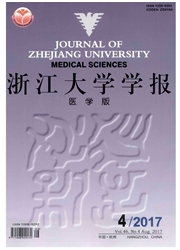

 中文摘要:
中文摘要:
[摘要]作为机体抵抗病原微生物的第一道防线,固有免疫细胞通过模式识别受体(PRR)识别病原体相关模式分子(PAMP)继而启动下游信号通路,以发挥固有免疫效应,清除入侵的病原体和异物。固有免疫细胞主要的信号通路有NOD样受体(NLR)及Toll样受体(TLR)信号通路,病原菌经过长期的选择进化产生了针对NLR及TLR信号通路的对抗机制,以利于其在宿主体内的生存增殖。病原菌主要通过产生毒力因子或降低刺激炎症小体活化的PAMP的表达,干扰、抑制或避免固有免疫细胞内炎症小体的活化,实现对NLR介导的信号通路的免疫逃逸。而对TLR信号通路的免疫逃逸主要通过产生毒力因子,抑制丝裂原活化蛋白激酶级联反应、抑制NF—KB活化以及通过产生含有TIR结构域的蛋白,直接与TLR或者TLR信号通路中的接头蛋白结合,干扰下游信号转导三种机制。
 英文摘要:
英文摘要:
The innate immune system provides a first line of defense against invading pathogens, in which the pattern recognition receptors (PRR) recognize pathogen-associated molecular patterns (PAMP) and initiate the downstream signaling pathways to eliminate the encountered pathogens signaling pathways: NOD-like receptor (NLR) si (TLR) signaling There gnaling are two main classes of such pathway and Toll-like receptor pathway. The microbial pathogens under selective pressure have evolved numerous mechanisms to avoid and/or manipulate the NLR and TLR signal transduction for survival and replication. To evade the NLR si pathogens interfere and/or inhibit inflammasome activation in innate gnaling pathway, immune cells by producing virulence factors or reducing PAMPs expression. The mechanisms for pathogens to evade TLR signaling pathway include: inhibition of mitogen activated protein kinases (MAPKs) cascade reaction, inhibition of NF-KB activation, and interference of down-stream signal transduction by producing Toll/interleukin-1 receptor (TIR)-containing proteins which bind directly with TLRs or adaptor proteins in the signaling pathway.
 同期刊论文项目
同期刊论文项目
 同项目期刊论文
同项目期刊论文
 期刊信息
期刊信息
